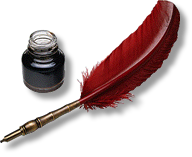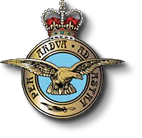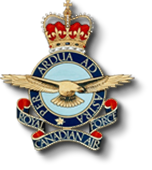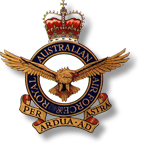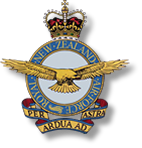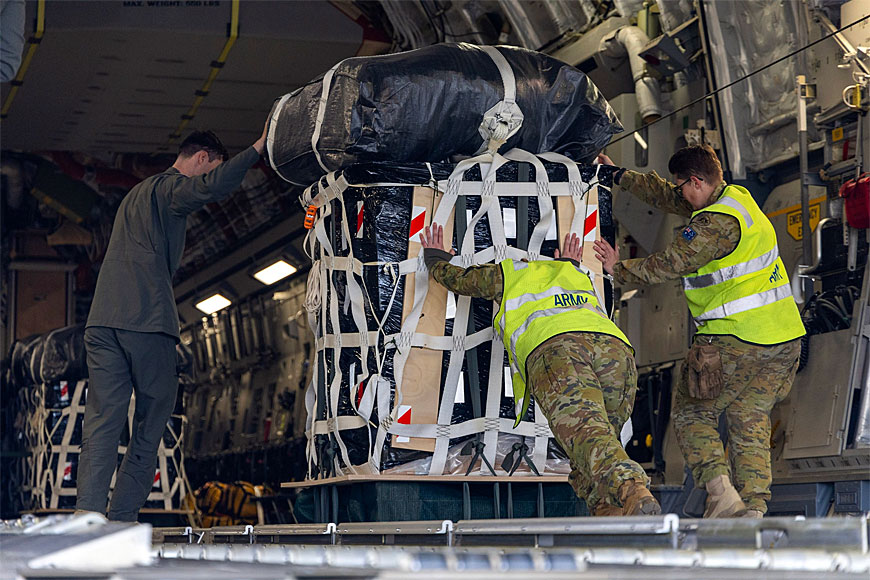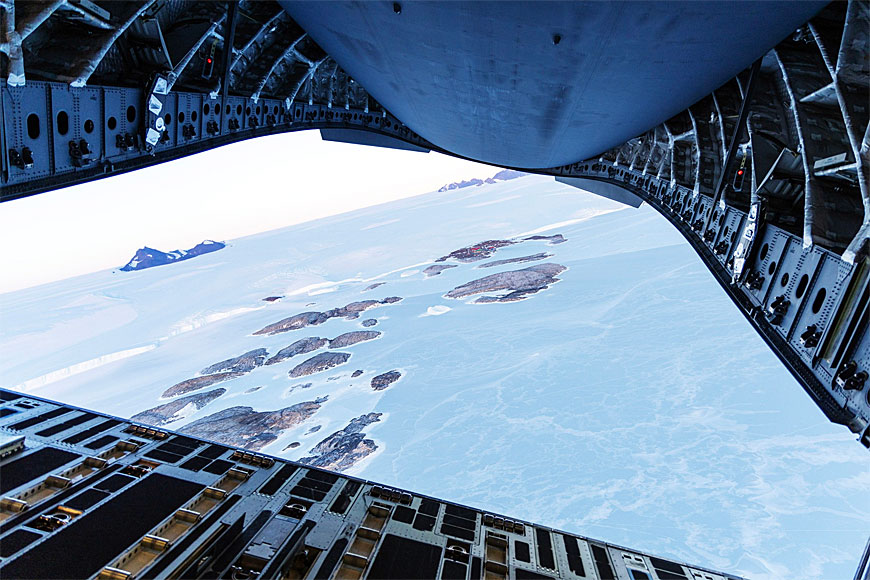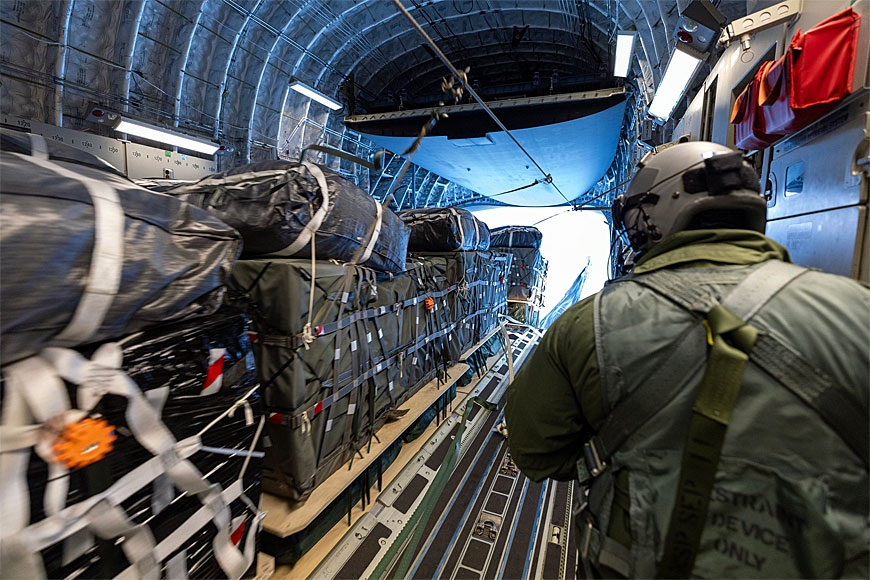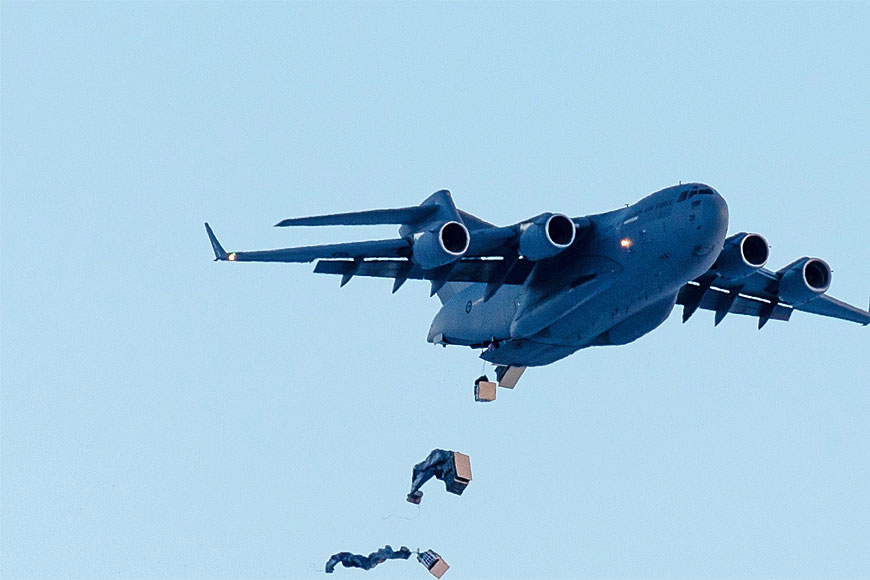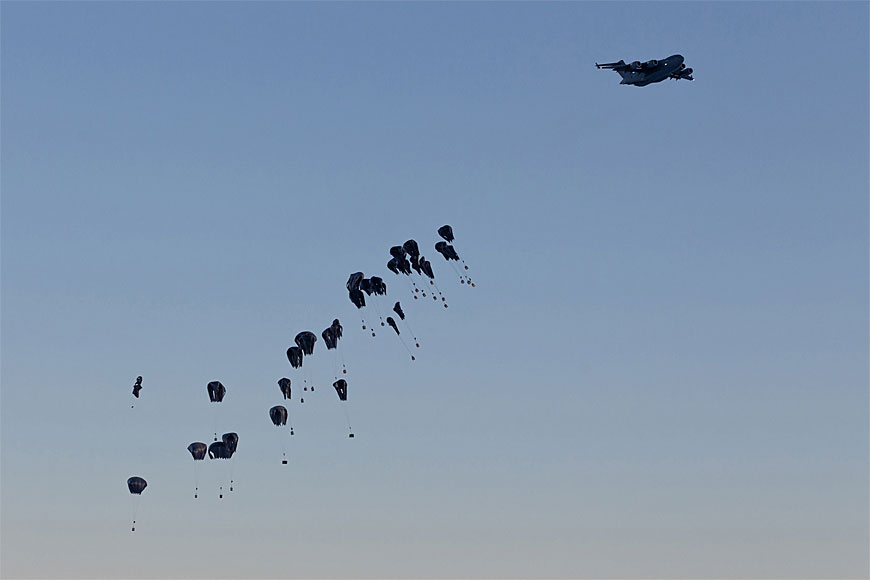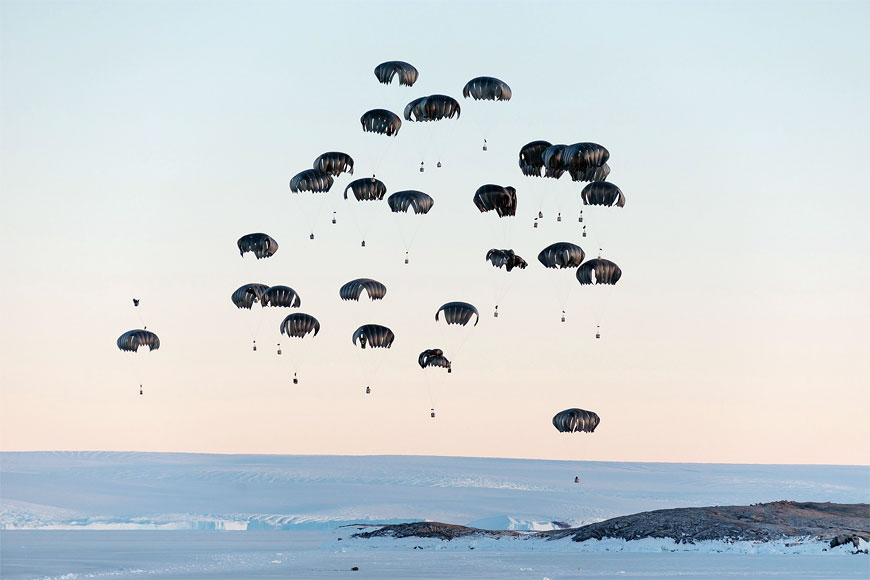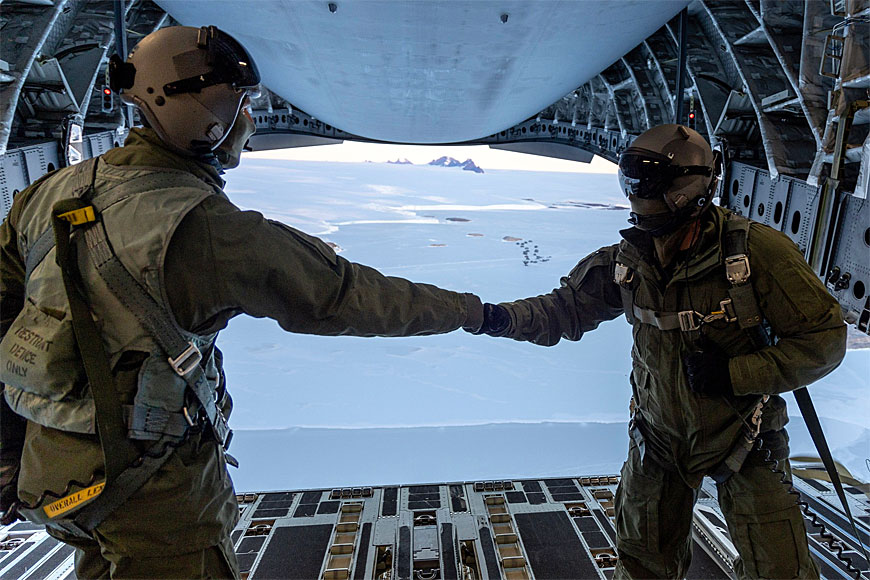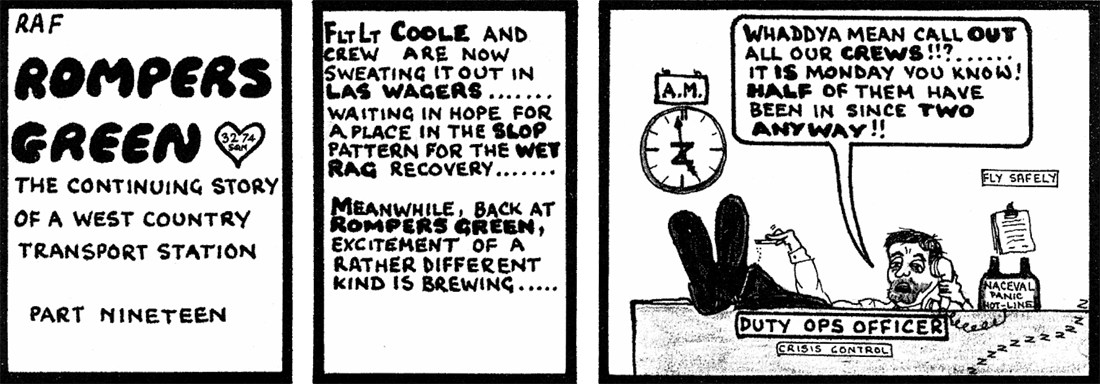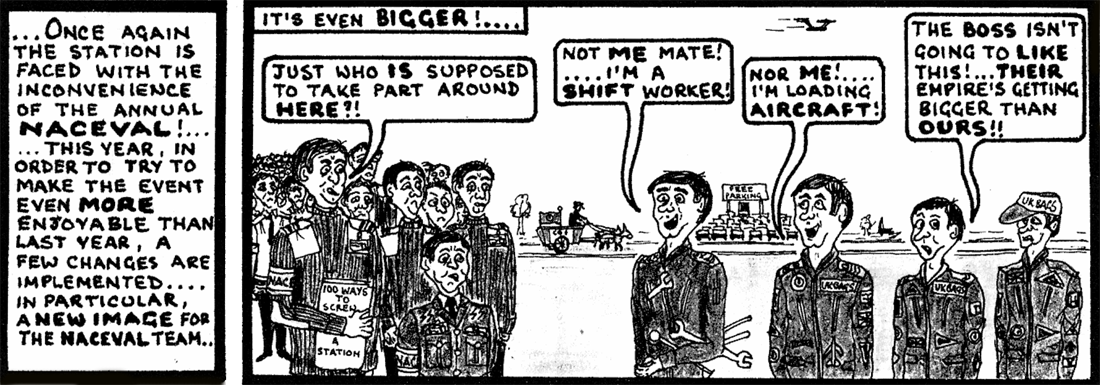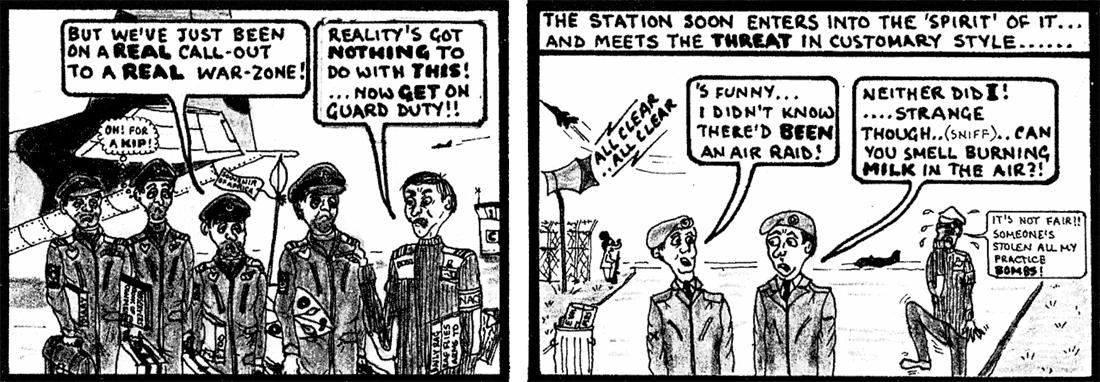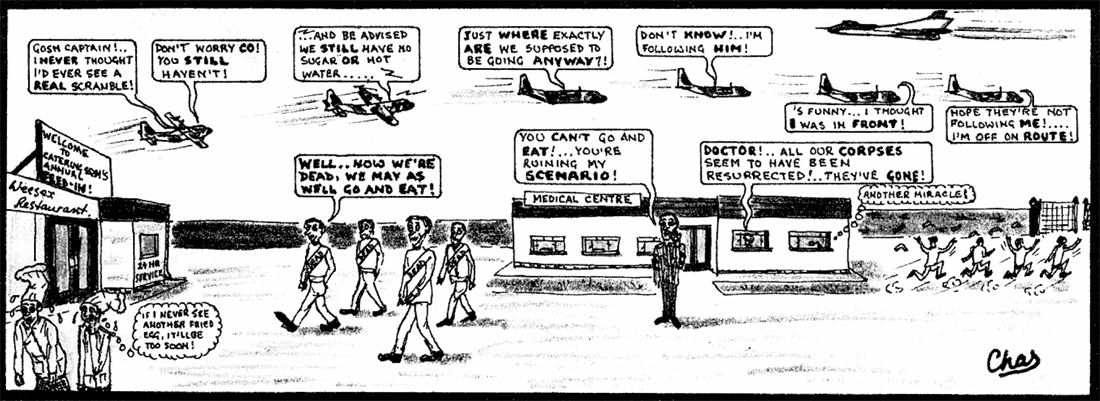

New Zealand PM takes commercial flight after Air Force plane breakdown
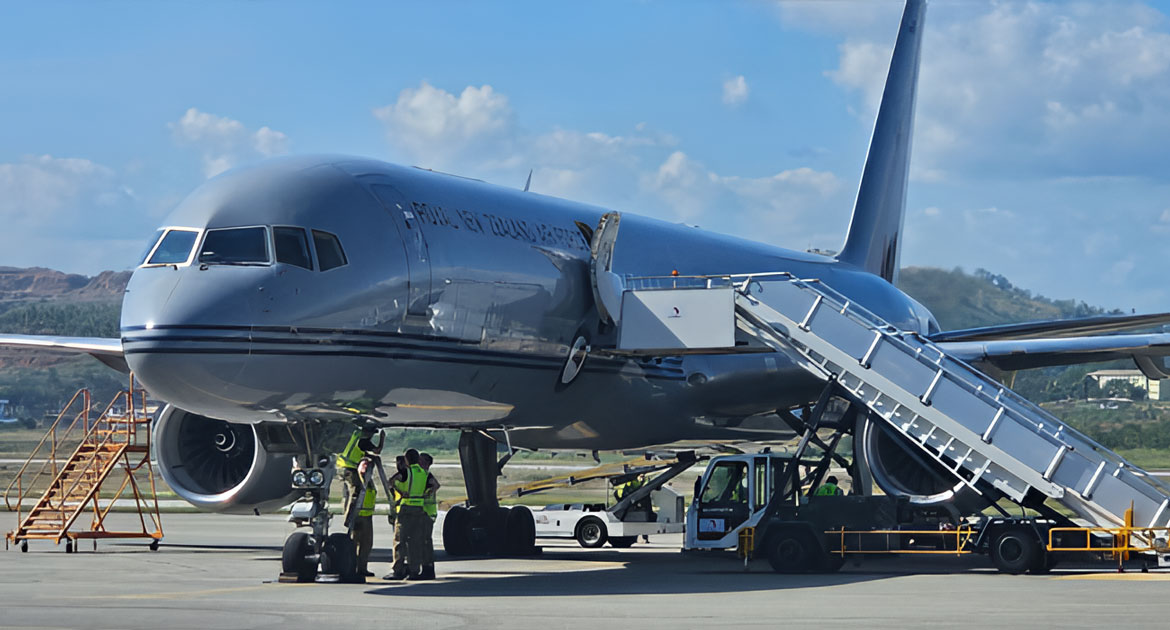
Engineers work on the RNZAF plane that carried New Zealand’s Prime Minister, Christopher Luxon
New Zealand’s Prime Minister, Christopher Luxon, had to switch to a commercial flight en route to Japan after his Air Force plane broke down during a refuelling stop in Papua New Guinea, his office announced on Monday.
Luxon was travelling aboard a Royal New Zealand Air Force Boeing 757 when a technical issue arose while the aircraft was refuelling at Port Moresby International Airport on June 17, 2024. The problem involved a command module controlling a small flap on the wing, which limited the plane’s altitude and speed, thus reducing its range, according to a defence spokesperson.
As a result, late on Sunday, Luxon and his delegation transitioned to a scheduled flight from Port Moresby to Tokyo, with a stopover in Hong Kong. Engineers began working on the faulty aircraft at Port Moresby International Airport to resolve the issue.
tribuneonlineng.com/channelstv.com
Luxon was travelling aboard a Royal New Zealand Air Force Boeing 757 when a technical issue arose while the aircraft was refuelling at Port Moresby International Airport on June 17, 2024. The problem involved a command module controlling a small flap on the wing, which limited the plane’s altitude and speed, thus reducing its range, according to a defence spokesperson.
As a result, late on Sunday, Luxon and his delegation transitioned to a scheduled flight from Port Moresby to Tokyo, with a stopover in Hong Kong. Engineers began working on the faulty aircraft at Port Moresby International Airport to resolve the issue.
tribuneonlineng.com/channelstv.com


From: Mark Attrill, Tallinn
Subject: Re: UKMAMS OBA OBB #053124
Hi Tony,
Sorry I have not been in contact in recent months, but it has been a very busy period in the college and, much as I wanted to, I have simply not had the time to contribute to the more recent newsletters. I will put this right in the next couple of weeks, since I have several tales to tell on 'flat floor loads' and 'exercises' (including one which is a combination of both!).
In the meantime, I must provide an immediate response to one of the tales in this most recent edition since it resonates with me very much. It is with regard to Harold Jones' piece on Exercise Cold Stream in November 1971. I was obviously not around the RAF in 1971, but some years later (from 2005-08 to be precise) I was on an exchange tour with the Italian Defence General Staff in Rome. I worked very closely with the DA and since he did not have a dedicated Air Attaché, I was sometimes asked to help him and the Naval Attaché with ceremonial events (of which there were many).
On this particular occasion, I was asked to attend a memorial event at the Italian HQ of the 'Folgore' Parachute Brigade in Livorno, near Pisa. The event took place on 21 November 2006 and included an RAF delegation from No.24 Squadron (including the Chairman of the 24 Squadron Association and the OC) and relatives of some members of the crew who had lost their lives 35 years earlier. It was an all-day affair with several re-dedication ceremonies at various locations and a Church Service. Unbeknown to me, the latter included a speech, which I, as the senior resident RAF Officer present was to provide in Italian! At the time, my Italian was still not so good but I prevailed and everyone seemed to nod at all the right intervals. We were then ushered to the Officers' Club for a lunch after which, with some relief, I boarded the bus with my RAF colleagues to depart at the end of the commemorative event. Very shortly after boarding the bus I was called forward once again to disembark and provide an interview, again in Italian, for broadcast on national TV... talk about being put on the spot! I somehow survived and my Italian work colleagues, having watched the news item over the weekend, expressed their gratitude on the Monday morning. It was a very poignant occasion, remembering the largest post-WWII loss of Italian military personnel and, of course, one of our very own C-130 crews.
Anyway, more to follow in due course...
Keep up the great work, as always
Mark
Subject: Re: UKMAMS OBA OBB #053124
Hi Tony,
Sorry I have not been in contact in recent months, but it has been a very busy period in the college and, much as I wanted to, I have simply not had the time to contribute to the more recent newsletters. I will put this right in the next couple of weeks, since I have several tales to tell on 'flat floor loads' and 'exercises' (including one which is a combination of both!).
In the meantime, I must provide an immediate response to one of the tales in this most recent edition since it resonates with me very much. It is with regard to Harold Jones' piece on Exercise Cold Stream in November 1971. I was obviously not around the RAF in 1971, but some years later (from 2005-08 to be precise) I was on an exchange tour with the Italian Defence General Staff in Rome. I worked very closely with the DA and since he did not have a dedicated Air Attaché, I was sometimes asked to help him and the Naval Attaché with ceremonial events (of which there were many).
On this particular occasion, I was asked to attend a memorial event at the Italian HQ of the 'Folgore' Parachute Brigade in Livorno, near Pisa. The event took place on 21 November 2006 and included an RAF delegation from No.24 Squadron (including the Chairman of the 24 Squadron Association and the OC) and relatives of some members of the crew who had lost their lives 35 years earlier. It was an all-day affair with several re-dedication ceremonies at various locations and a Church Service. Unbeknown to me, the latter included a speech, which I, as the senior resident RAF Officer present was to provide in Italian! At the time, my Italian was still not so good but I prevailed and everyone seemed to nod at all the right intervals. We were then ushered to the Officers' Club for a lunch after which, with some relief, I boarded the bus with my RAF colleagues to depart at the end of the commemorative event. Very shortly after boarding the bus I was called forward once again to disembark and provide an interview, again in Italian, for broadcast on national TV... talk about being put on the spot! I somehow survived and my Italian work colleagues, having watched the news item over the weekend, expressed their gratitude on the Monday morning. It was a very poignant occasion, remembering the largest post-WWII loss of Italian military personnel and, of course, one of our very own C-130 crews.
Anyway, more to follow in due course...
Keep up the great work, as always
Mark

From: Len Bowen, Chisholm, ACT
Subject: Re: UKMAMS OBA OBB #053124
G'Day Tony,
Subject: Re: UKMAMS OBA OBB #053124
G'Day Tony,
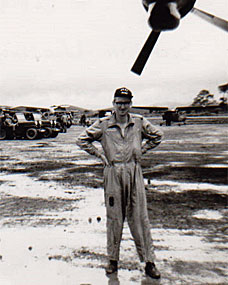

Thanks for another great OBA OBB. As usual - for now - it was my intention to have some input, but again as usual I missed the cut-off. Only excuse; we are in the middle of prepping our house for sale, and downsizing. Afraid that a 1600 Sq m back yard is getting a bit much for my 79 y-o gardening ability. Could rent out some of it to Bear Grills (sp?) as a jungle survival training area ..... but the dog loves it. Also elder son's 50th birthday! OMG I'm getting old(er)!
Ref Barry Tappenden's tale of delivery of relief supplies in South Vietnam .... lucky bugger. We didn't get a British Embassy reception for our stint in 'Nam ...oh, and do I get royalties for the use of my photo of the Bev at Dalat with his article? (Picture at left is self at Dalat.)
Will try harder next time.
Rgds,
Len b
Ref Barry Tappenden's tale of delivery of relief supplies in South Vietnam .... lucky bugger. We didn't get a British Embassy reception for our stint in 'Nam ...oh, and do I get royalties for the use of my photo of the Bev at Dalat with his article? (Picture at left is self at Dalat.)
Will try harder next time.
Rgds,
Len b

Help from Above
Parachute payloads for Mawson Research Station incoming! Gives a whole new meaning to 'airmail'. As part of Operation Southern Discovery, an RAAF C-17A made a 10,000km round trip to deliver essential stores to the Australian Antarctic Division.
Departing from Perth Airport the C-17A crew got a mid-air boost from a RAAF KC-30A Multi-Role Tanker Transport over the Southern Ocean before delivering 15 tonnes of vital winter goods to the Aussie Antarctic team!
RAAF
Departing from Perth Airport the C-17A crew got a mid-air boost from a RAAF KC-30A Multi-Role Tanker Transport over the Southern Ocean before delivering 15 tonnes of vital winter goods to the Aussie Antarctic team!
RAAF
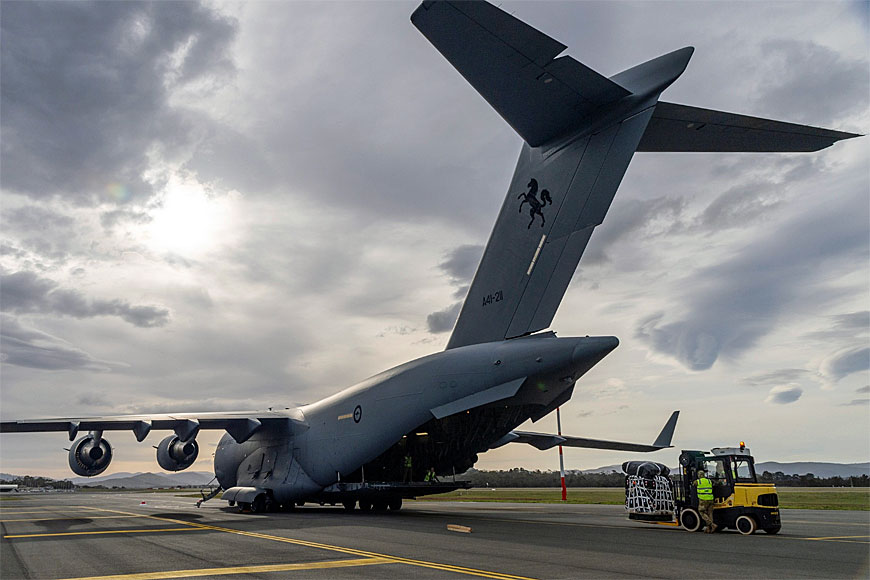

From: Mark Attrill, Tallinn
Subject: Mishaps
Tony,
I know exactly who you are talking about [The anecdote about Eglin -vs- Elgin] since it happened during my time on the Squadron!
A little earlier than this, while we were at RAF College Cranwell, the said officer was one of a quartet that went out to a local pub one Friday night. On the way home our driver, a wise old ex-aircrew 'retread', decided to play a joke on this officer (who had previously made one or two comments about his driving) by gently easing his foot off of the accelerator and suggesting that he was about to run out of petrol. The car was duly stalled and conked out at the side of the small country lane, miles from any known life, in rural Lincolnshire. We had all been in on the prank and let it run for 4-5 minutes before this individual had a meltdown and we headed home.
Anyway, not relevant to the task but I will wrack my brains... I'm sure there must be one or two.
Cheers
Mark
Subject: Mishaps
Tony,
I know exactly who you are talking about [The anecdote about Eglin -vs- Elgin] since it happened during my time on the Squadron!
A little earlier than this, while we were at RAF College Cranwell, the said officer was one of a quartet that went out to a local pub one Friday night. On the way home our driver, a wise old ex-aircrew 'retread', decided to play a joke on this officer (who had previously made one or two comments about his driving) by gently easing his foot off of the accelerator and suggesting that he was about to run out of petrol. The car was duly stalled and conked out at the side of the small country lane, miles from any known life, in rural Lincolnshire. We had all been in on the prank and let it run for 4-5 minutes before this individual had a meltdown and we headed home.
Anyway, not relevant to the task but I will wrack my brains... I'm sure there must be one or two.
Cheers
Mark


From: Mike/Gerry Lefebvre, Oromocto, NB
Subject: Mishaps
Tony,
When I was a Hercules Loadmaster on 436 Squadron at Trenton, Ontario, we were to fly to Cold Lake, Alberta to airlift some of the F5 squadron to the east of the country.
On arrival at Cold Lake, the operations center there did not give us the welcome we expected. They were quite surprised as they had no record of our impending arrival. So, our aircraft commander had a look at our Ops Order only to realize that we were one month early!
It seemed impossible that the loadmaster, flight engineer, navigator, pilots and schedulers had not realized the error. Meals requested through Air Movements and the mess hall were also for a month down the road.
So we flew another 6 hrs back home with an empty C-130.
Regards to all of us with such souvenirs.
Mike
Subject: Mishaps
Tony,
When I was a Hercules Loadmaster on 436 Squadron at Trenton, Ontario, we were to fly to Cold Lake, Alberta to airlift some of the F5 squadron to the east of the country.
On arrival at Cold Lake, the operations center there did not give us the welcome we expected. They were quite surprised as they had no record of our impending arrival. So, our aircraft commander had a look at our Ops Order only to realize that we were one month early!
It seemed impossible that the loadmaster, flight engineer, navigator, pilots and schedulers had not realized the error. Meals requested through Air Movements and the mess hall were also for a month down the road.
So we flew another 6 hrs back home with an empty C-130.
Regards to all of us with such souvenirs.
Mike


Britons allowed to join the Australian Defence Force from next year
People from the UK will be allowed to join the Australian Defence Force (ADF) after it decided to allow recruits from other countries. Australia is struggling to recruit enough people into its armed forces and is hoping that relaxing the entry restrictions will help boost numbers.
New Zealand nationals who permanently reside in Australia will be allowed to join from July while recruits from the UK and other countries such as Canada and the US will be allowed in from next year.
The ADF said it is facing growing threats in the Indo-Pacific region, and Chinese military expansion in the region is posing an increasing threat to Australian interests. Australia has already cultivated a closer working relationship with both the UK and US after signing the Aukus pact in 2021. The alliance was a reaction to the growing threat the Chinese military posed in the region.
It is estimated that the ADF is short by around 4,400 personnel and the focus will be on recruiting nationals from the UK, US, Canada and New Zealand – members of the Five Eyes intelligence sharing alliance with Australia. Only those with permanent residency in Australia will be permitted to join.
New Zealand nationals who permanently reside in Australia will be allowed to join from July while recruits from the UK and other countries such as Canada and the US will be allowed in from next year.
The ADF said it is facing growing threats in the Indo-Pacific region, and Chinese military expansion in the region is posing an increasing threat to Australian interests. Australia has already cultivated a closer working relationship with both the UK and US after signing the Aukus pact in 2021. The alliance was a reaction to the growing threat the Chinese military posed in the region.
It is estimated that the ADF is short by around 4,400 personnel and the focus will be on recruiting nationals from the UK, US, Canada and New Zealand – members of the Five Eyes intelligence sharing alliance with Australia. Only those with permanent residency in Australia will be permitted to join.
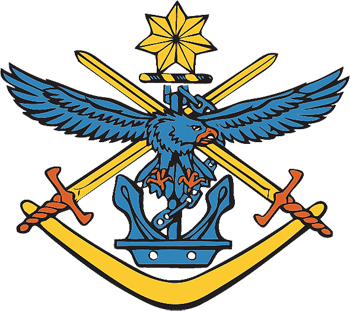
Australian Defence Personnel Minister Matt Keogh said: "It's about growing the pool of people we are going to recruit from that have already shown a commitment to Australia. So, they are already, if you like, on a pathway towards potential citizenship, and the obligation would be that if they join the Defence Force, once they serve for 90 days, they become eligible and would be expected to become Australian citizens."
The move has been welcomed by the senator for Tasmania Jacqui Lambie, who is calling for the ADF to expand recruitment further, "Hallelujah – well done it is about time," she said. "I just don't think what they are doing here and trying to take them from here is going to be enough. They have got to go out there broadly and go the Pacific Islanders, the Papua New Guineans."
forces.net
The move has been welcomed by the senator for Tasmania Jacqui Lambie, who is calling for the ADF to expand recruitment further, "Hallelujah – well done it is about time," she said. "I just don't think what they are doing here and trying to take them from here is going to be enough. They have got to go out there broadly and go the Pacific Islanders, the Papua New Guineans."
forces.net

From: Chris Goss, Marlow, Bucks
Subject: Mishaps
Tony,
I think the date was 20 Feb '86. Self, Shuggie Shewan and Al Verth were on a Green Flag trip departing Lyneham in XV183, 18 Feb '86, picked up load at Marham, night stop Goose Bay, night stop Little Rock. It was then to be a QTR at Nellis. The whole trip, the crew had no interaction with us at all and if I remember correctly, this was the time when we only got crew meals if we were working at the end of the leg. So, for 2 days, we had poor to average rations. When we got to Nellis, all things changed. "Could we be as quick as possible" as they were lunch critical, i.e wanted to get a full allowance for lunch if they got back in time to Little Rock.
The loadie (a young sergeant who hardly talked to us the whole trip) would help by doing the winch. We cracked on but on winching a 48KVA ground power unit, the loadie decided to power the winch back in rather than using the handle (which he should have done). Al and Shuggie were at the back end and I was walked back up to the next item for offload. Next thing I remember was BANG! For some unknown reason I threw myself to the floor and on looking right, saw a winch hook slither past me. The loadie had not noticed the hook flip over, lock onto the ramp frame or the screaming noise for the winch. The floor eventually ripped up, the loadie was hit by the cable around the throat and the winch hook broke his leg before continuing towards me. All ground to a halt, USAF personnel were called, we finished offload and that was it. Never saw the crew again that trip, we were never asked for our story. Most odd.
Footnote to story. Saw the loadie next in April 1987 on a trainer to Harare. He had been commissioned by then, or it was his twin brother?
Lesson learned: Always use the handle to wind the winch cable back in and before using it to winch out, ensure the handle is out.
There is another story from June '86 and the person responsible will remain anonymous. I was on the control for the winch, the cable had been manually wound in and before winding out, I checked with the man winding to make sure that the handle was out. "Yes Boss" was the answer. It wasn't and how Mick Cocker managed to regain control of the 48KVA as it came down the ramp is one of those mysteries. I can still visualise it now and both he and I ripped into Mr Anonymous. He was very, very quiet on the return trip...
Chris
Subject: Mishaps
Tony,
I think the date was 20 Feb '86. Self, Shuggie Shewan and Al Verth were on a Green Flag trip departing Lyneham in XV183, 18 Feb '86, picked up load at Marham, night stop Goose Bay, night stop Little Rock. It was then to be a QTR at Nellis. The whole trip, the crew had no interaction with us at all and if I remember correctly, this was the time when we only got crew meals if we were working at the end of the leg. So, for 2 days, we had poor to average rations. When we got to Nellis, all things changed. "Could we be as quick as possible" as they were lunch critical, i.e wanted to get a full allowance for lunch if they got back in time to Little Rock.
The loadie (a young sergeant who hardly talked to us the whole trip) would help by doing the winch. We cracked on but on winching a 48KVA ground power unit, the loadie decided to power the winch back in rather than using the handle (which he should have done). Al and Shuggie were at the back end and I was walked back up to the next item for offload. Next thing I remember was BANG! For some unknown reason I threw myself to the floor and on looking right, saw a winch hook slither past me. The loadie had not noticed the hook flip over, lock onto the ramp frame or the screaming noise for the winch. The floor eventually ripped up, the loadie was hit by the cable around the throat and the winch hook broke his leg before continuing towards me. All ground to a halt, USAF personnel were called, we finished offload and that was it. Never saw the crew again that trip, we were never asked for our story. Most odd.
Footnote to story. Saw the loadie next in April 1987 on a trainer to Harare. He had been commissioned by then, or it was his twin brother?
Lesson learned: Always use the handle to wind the winch cable back in and before using it to winch out, ensure the handle is out.
There is another story from June '86 and the person responsible will remain anonymous. I was on the control for the winch, the cable had been manually wound in and before winding out, I checked with the man winding to make sure that the handle was out. "Yes Boss" was the answer. It wasn't and how Mick Cocker managed to regain control of the 48KVA as it came down the ramp is one of those mysteries. I can still visualise it now and both he and I ripped into Mr Anonymous. He was very, very quiet on the return trip...
Chris


From: Stephen Davey, Tadcaster, North Yorks
Subject: Mishaps
Tony,
Quite a few mishaps come to mind, but one stands out although it actually happened to another shift. "A" shift traffic (that's my shift) came in to take over from "C" shift, a story was going round about an incident out on the pan. When we looked out of the crew room window we were greeted with the sight of the Condec which appeared to have a Lightning Rolls Royce Avon 301 aero engine on a stand which had toppled over at an angle of approximately 45 degrees!
Apparently the engine wasn't secured properly and when the driver braked, the engine shot forward and broke the metal stop on the Condec. As you can imagine, the sh!t hit the fan and the powers to be were not impressed. There was a saying going around that day and for some time afterwards, "Ding-dong, Avon falling"!
Many regards,
Steve
Subject: Mishaps
Tony,
Quite a few mishaps come to mind, but one stands out although it actually happened to another shift. "A" shift traffic (that's my shift) came in to take over from "C" shift, a story was going round about an incident out on the pan. When we looked out of the crew room window we were greeted with the sight of the Condec which appeared to have a Lightning Rolls Royce Avon 301 aero engine on a stand which had toppled over at an angle of approximately 45 degrees!
Apparently the engine wasn't secured properly and when the driver braked, the engine shot forward and broke the metal stop on the Condec. As you can imagine, the sh!t hit the fan and the powers to be were not impressed. There was a saying going around that day and for some time afterwards, "Ding-dong, Avon falling"!
Many regards,
Steve


From: David Powell, Princes Risborough, Bucks
Subject: Mishaps
Dear Tony,
Mishaps? Not on F Team in my time and I am sure not on yours. Although, we often did get unexpected outcomes and interesting solutions to getting the job done. Like the time at RAF Luqa in April 1968 on Exercise CRAYON, one of the occasional ‘all hands’ grab your suitcases overseas exercise deployment of the Army’s 3 Div, reaction force. On this occasion this major exercise required half a dozen or so teams to reinforce (take over) the Air Movements resources in Malta. The first few days were largely occupied with providing 24/7 reception facility for a stream of Britannia PCF loads deploying the Army to regroup on Malta before attacking (sorry helping) some threatened country over the horizon. Fairly early on, F Team had drawn a night shift slot.
Imagine the scene at around 0200 underneath a dark starlit night sky: a largely deserted ramp, one or two aircraft connected to humming life support power trolleys, otherwise – deserted.
Our last incoming load had been sent on their way in the Army’s 3 tonner taxi fleet, and it will be some time before our next off-load. We had been briefed, if we had some spare time, to tidy up the MAMS kit ACHE and collect it back in our allotted parking area. This area was dominated by the Squadron’s well-travelled air portable Britannia Freight Lift Platform (BFLP) a sort of mega four poster bed, assembled Meccano/Forth Bridge style out of a couple of dozen 20 foot metal tubes, and with a bed in the middle which could be raised to the height of the bottom sill of an opened Brit freight door.
Littered around the ramp were one or two large 4 wheel trailers (which looked as if they has been picked up by MoD at a farm closure sale and repainted). I think they were called Hands (or Hans?) trailers. They were quite big, about 8ft wide and 16 ft long and heavy, ideal for humping suitcases or bundles of weapons. So, we grab a Landrover and set about recovering trailers. Now, I had always wanted to try towing one of these trailers, so I asked permission from Corporal Bob Turner, the Team’s MTO, if I could be allowed to collect one of the trailers. At this point I should point out that this was not F Team’s immaculate super loved and maintained Rover, left behind at Abingdon, but one from the local MT pool. Bob, before he grudgingly gave me the keys, did say something about the brakes being a bit ‘soft’, and I should also have mentioned that I was rarely allowed to drive anything. Also, our ACHE ‘park’ was where the ramp sloped away to help drain the ramp. So off I trundle, in the dark, to collect one of the abandoned trailers. Hook up, and off I go, easy-peasey. The obvious space for the trailer was alongside the others behind our BFLP.
Now, in my defence, it was dark, the brakes were rubbish, the trailer was heavy, it was downhill, and I misjudged both the momentum and the width of the trailer, which proceeded to clip the corner end upright of our BFLP. Or, more accurately the now two halves of the former upright. Our next Brit was due in a couple of hours. Worried? I need not be, I had F Team, the world’s smoothest problem solvers. Action one: the two halves of our slightly broken BFLP beam were dispatched to the care of the night shift team in the RAF Luqa Ground Equipment workshop, where someone (no questions please) owed Bob Turner a favour. Action 2, meanwhile the rest of the Team reconvenes at the farthest corner of the RAF Luqa resident BFLP and proceeds to quietly disconnect and borrow a replacement beam. Action 3, replace our now missing beam and F Team are fully operational for our next PCF offload.
Meanwhile, before we go off shift, the neatly repaired and patched beam is returned (mind the wet paint!) and we refit it to the Luqa BFLP, where it will probably and hopefully remain unwanted, at least until the paint dries, so no one should notice the evidence of our night’s adventures, sorry – mishap? Especially, as before we hand over to the next Team, Bob points out that the now ex-Luqa BFLP beam had at one time been patched in exactly the same place as the replacement beam now fitted to theirs!
Happy days, kind regards
David Powell
F Team UKMAMS Abingdon 1967-69
Subject: Mishaps
Dear Tony,
Mishaps? Not on F Team in my time and I am sure not on yours. Although, we often did get unexpected outcomes and interesting solutions to getting the job done. Like the time at RAF Luqa in April 1968 on Exercise CRAYON, one of the occasional ‘all hands’ grab your suitcases overseas exercise deployment of the Army’s 3 Div, reaction force. On this occasion this major exercise required half a dozen or so teams to reinforce (take over) the Air Movements resources in Malta. The first few days were largely occupied with providing 24/7 reception facility for a stream of Britannia PCF loads deploying the Army to regroup on Malta before attacking (sorry helping) some threatened country over the horizon. Fairly early on, F Team had drawn a night shift slot.
Imagine the scene at around 0200 underneath a dark starlit night sky: a largely deserted ramp, one or two aircraft connected to humming life support power trolleys, otherwise – deserted.
Our last incoming load had been sent on their way in the Army’s 3 tonner taxi fleet, and it will be some time before our next off-load. We had been briefed, if we had some spare time, to tidy up the MAMS kit ACHE and collect it back in our allotted parking area. This area was dominated by the Squadron’s well-travelled air portable Britannia Freight Lift Platform (BFLP) a sort of mega four poster bed, assembled Meccano/Forth Bridge style out of a couple of dozen 20 foot metal tubes, and with a bed in the middle which could be raised to the height of the bottom sill of an opened Brit freight door.
Littered around the ramp were one or two large 4 wheel trailers (which looked as if they has been picked up by MoD at a farm closure sale and repainted). I think they were called Hands (or Hans?) trailers. They were quite big, about 8ft wide and 16 ft long and heavy, ideal for humping suitcases or bundles of weapons. So, we grab a Landrover and set about recovering trailers. Now, I had always wanted to try towing one of these trailers, so I asked permission from Corporal Bob Turner, the Team’s MTO, if I could be allowed to collect one of the trailers. At this point I should point out that this was not F Team’s immaculate super loved and maintained Rover, left behind at Abingdon, but one from the local MT pool. Bob, before he grudgingly gave me the keys, did say something about the brakes being a bit ‘soft’, and I should also have mentioned that I was rarely allowed to drive anything. Also, our ACHE ‘park’ was where the ramp sloped away to help drain the ramp. So off I trundle, in the dark, to collect one of the abandoned trailers. Hook up, and off I go, easy-peasey. The obvious space for the trailer was alongside the others behind our BFLP.
Now, in my defence, it was dark, the brakes were rubbish, the trailer was heavy, it was downhill, and I misjudged both the momentum and the width of the trailer, which proceeded to clip the corner end upright of our BFLP. Or, more accurately the now two halves of the former upright. Our next Brit was due in a couple of hours. Worried? I need not be, I had F Team, the world’s smoothest problem solvers. Action one: the two halves of our slightly broken BFLP beam were dispatched to the care of the night shift team in the RAF Luqa Ground Equipment workshop, where someone (no questions please) owed Bob Turner a favour. Action 2, meanwhile the rest of the Team reconvenes at the farthest corner of the RAF Luqa resident BFLP and proceeds to quietly disconnect and borrow a replacement beam. Action 3, replace our now missing beam and F Team are fully operational for our next PCF offload.
Meanwhile, before we go off shift, the neatly repaired and patched beam is returned (mind the wet paint!) and we refit it to the Luqa BFLP, where it will probably and hopefully remain unwanted, at least until the paint dries, so no one should notice the evidence of our night’s adventures, sorry – mishap? Especially, as before we hand over to the next Team, Bob points out that the now ex-Luqa BFLP beam had at one time been patched in exactly the same place as the replacement beam now fitted to theirs!
Happy days, kind regards
David Powell
F Team UKMAMS Abingdon 1967-69


From: Jim Nadin, Lincoln
Subject: Mishaps
Hello Tony,
This apocryphal tale takes place in the early 70s when we were running with the AE1010 supply system and Coltishall was a front line Lightning base. One Friday night, I was on duty and just about to go off shift at 22:00 when the phone rang. Corporal from the rectification store, 4 bolts required immediately if not sooner and the craft is being declared AOG. Predictably, no stock held on base so I set about firing up the 1010 machine, input the code, reference number, quantity and priority, produced the ticker tape, fed it through the telecoms machine to the SCC Hendon and job done. Power off, lights out and a fast cycle to the Mess for duty supper before it closed.
Sunday afternoon I am tannoyed to attend the Squadron immediately. I cycle down wondering what on earth was wrong to find a most unhappy Flight Sergeant, 4 Corporal drivers and 4 low loaders from 2 MT each with a massive container tied down on the trailers. It appears that in my haste inputting the demand, I had transposed the section code of 52 for the Lightning to 25 for the Shackleton and the reference number for both aircraft was active. Unfortunately for the Shackleton it was for an entire tailplane and in this particular case, four! The drivers, unlike the Flight Sergeant were not unhappy as they would be claiming rates for 2 nights away whilst returning the unwanted tailplanes back to Stafford. First thing Monday I had to personally phone the Squadron Rectification Control and apologise for my stupidity in ensuring the aircraft was still AOG. ‘No problem son’ said the Chief who answered the phone, ‘we found some bolts in a locker and the craft is on the line ready for exercise’. I learned from that mistake but never understood why nobody at Stafford thought to question a Lightning Unit requiring 4 Shackleton tailplanes!
Best wishes,
Jim
Subject: Mishaps
Hello Tony,
This apocryphal tale takes place in the early 70s when we were running with the AE1010 supply system and Coltishall was a front line Lightning base. One Friday night, I was on duty and just about to go off shift at 22:00 when the phone rang. Corporal from the rectification store, 4 bolts required immediately if not sooner and the craft is being declared AOG. Predictably, no stock held on base so I set about firing up the 1010 machine, input the code, reference number, quantity and priority, produced the ticker tape, fed it through the telecoms machine to the SCC Hendon and job done. Power off, lights out and a fast cycle to the Mess for duty supper before it closed.
Sunday afternoon I am tannoyed to attend the Squadron immediately. I cycle down wondering what on earth was wrong to find a most unhappy Flight Sergeant, 4 Corporal drivers and 4 low loaders from 2 MT each with a massive container tied down on the trailers. It appears that in my haste inputting the demand, I had transposed the section code of 52 for the Lightning to 25 for the Shackleton and the reference number for both aircraft was active. Unfortunately for the Shackleton it was for an entire tailplane and in this particular case, four! The drivers, unlike the Flight Sergeant were not unhappy as they would be claiming rates for 2 nights away whilst returning the unwanted tailplanes back to Stafford. First thing Monday I had to personally phone the Squadron Rectification Control and apologise for my stupidity in ensuring the aircraft was still AOG. ‘No problem son’ said the Chief who answered the phone, ‘we found some bolts in a locker and the craft is on the line ready for exercise’. I learned from that mistake but never understood why nobody at Stafford thought to question a Lightning Unit requiring 4 Shackleton tailplanes!
Best wishes,
Jim


From: Ian Berry, Eastleaze, Swindon, Wilts
Subject: Mishaps
Hi Tony,
Attached is another article which I wrote for the Aviation Group. A genuine trip and if recall correctly the Team consisted of:
Flt Lt Chas Collier (Posted)
FSgt Baz Shatford (Promoted WO)
Sgt Ian Berry (Posted)
Cpl Geoff Simpson (Discharged)
Cpl Keith Simmonds (Posted?)
SAC Steve Broadhurst (Discharged & Emigrating)
Subject: Mishaps
Hi Tony,
Attached is another article which I wrote for the Aviation Group. A genuine trip and if recall correctly the Team consisted of:
Flt Lt Chas Collier (Posted)
FSgt Baz Shatford (Promoted WO)
Sgt Ian Berry (Posted)
Cpl Geoff Simpson (Discharged)
Cpl Keith Simmonds (Posted?)
SAC Steve Broadhurst (Discharged & Emigrating)
DIDN’T YOU GET THE MESSAGE?
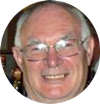
In early 1975, I was still serving as a Sergeant on UKMAMS at RAF Lyneham, although in May that year I was posted to Singapore. As a perk in those days, I was given a “Swansong” trip. Along with five others, all posted or retiring, I was tasked on a Belfast C1 to Belize to deliver 10 aircraft pallets of ammunition and explosives. The route was down as Brize Norton - Lajes (Azores) - Nassau - Belize - Bermuda - Lajes - Brize Norton. A simple enough task and in the Team Brief we decided what support equipment to take with us. As the aircraft would be fully rollered throughout there was no need to take a back-up manual winch or order extra tie down equipment from Brize. We also decided to travel route in KD (Khaki Drill) which is suitable for warmer climes and cotton flying suits when flying/working. (Nomex Fire Resistant Flying Suits did not exist at this time).
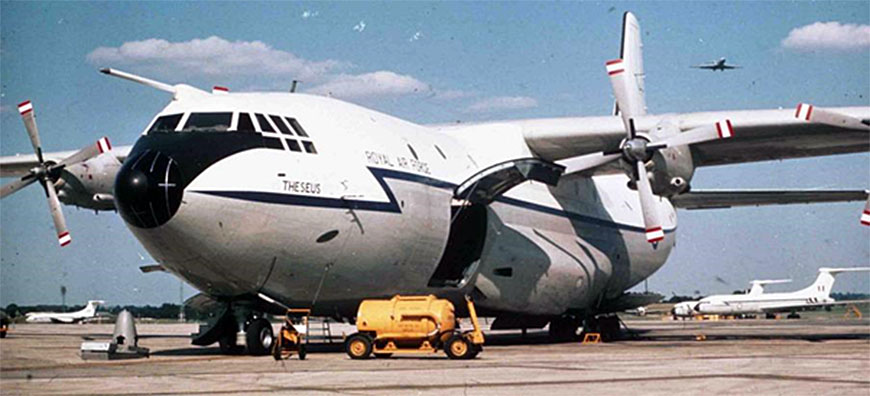
Belfast XR368 (Theseus) at RAF Brize Norton
On the 13th February we arrived at Brize Norton on a coach from Lyneham. All dressed in KD Longs with ties and over which was either a flying jacket or in my case my RAF Blue raincoat. On checking in at the Air Terminal we got the first piece of bad news, there was a technical delay of four hours. We decided to kick our heels in the Gateway House Transit Hotel, a facility famous for it’s officious civilian female staff who put fear into all passengers. At least there we could have a breakfast and watch television.
Eventually the time came to travel out to the aircraft, XR368 (Theseus) and sort out our gear. The aircraft was parked on an isolated pan because of the load. The load itself was on ten 108 x 88 ins aircraft pallets. Eight on the main floor and two on the aircraft ramp. This aircraft was also fitted with a Stub Deck just aft of the galley and was fitted with 18 seats. We exchanged greetings with the crew and proceeded to stow our gear. In these days it was still an Air Quartermaster (Q) as against their title now of Air Loadmaster (Loadie). The Q asked us why we were in KD? “Because we are off to sunnier climes” was the reply. “Didn’t you get the message?” he asked. “Because of the delay and affect on crew duty, we are now rerouted to Keflavik (Iceland) for the night and then refuel at Gander (Newfoundland) tomorrow.”
We were thinking it was a wind up but then he produced their copy of the signal. We were suitably stunned, heading North to colder climes and we had no cold weather gear! We were soon airborne out of Brize without any further problems and some 4hrs 10mins later arrived in a murky, wet and windy Keflavik Naval Air Station. The temperature was around zero. Not many RAF aircraft night stop in Iceland, given the choice as accommodation is basic. Ours was provided courtesy of the US Marine Corps. That night we didn’t venture out.
Eventually the time came to travel out to the aircraft, XR368 (Theseus) and sort out our gear. The aircraft was parked on an isolated pan because of the load. The load itself was on ten 108 x 88 ins aircraft pallets. Eight on the main floor and two on the aircraft ramp. This aircraft was also fitted with a Stub Deck just aft of the galley and was fitted with 18 seats. We exchanged greetings with the crew and proceeded to stow our gear. In these days it was still an Air Quartermaster (Q) as against their title now of Air Loadmaster (Loadie). The Q asked us why we were in KD? “Because we are off to sunnier climes” was the reply. “Didn’t you get the message?” he asked. “Because of the delay and affect on crew duty, we are now rerouted to Keflavik (Iceland) for the night and then refuel at Gander (Newfoundland) tomorrow.”
We were thinking it was a wind up but then he produced their copy of the signal. We were suitably stunned, heading North to colder climes and we had no cold weather gear! We were soon airborne out of Brize without any further problems and some 4hrs 10mins later arrived in a murky, wet and windy Keflavik Naval Air Station. The temperature was around zero. Not many RAF aircraft night stop in Iceland, given the choice as accommodation is basic. Ours was provided courtesy of the US Marine Corps. That night we didn’t venture out.
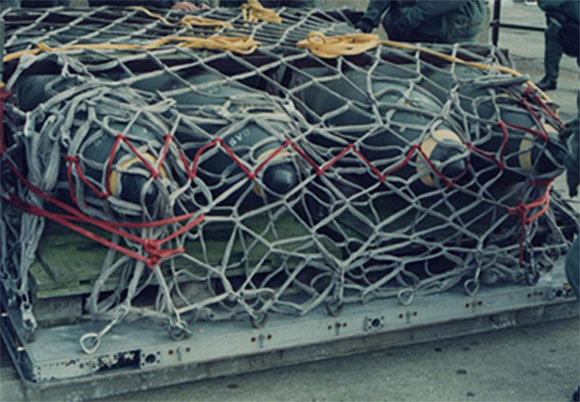
108" x 88" aircraft pallet with 1,000 lb bombs
Example of the roller and beams fitted (HeavyLift Belfast)
Crew transport collected us all on time the next morning and took us back to the aircraft. All over the world the US Forces use the same vehicle which is the same as the Yellow School Bus we have all seen in films. Basic, but functional but that doesn’t always apply to the heater! No problems were encountered and we were airborne again for Gander where we arrived some 5hrs20mins later. We were all thinking it was good this was a short stop as we were now ready for some sunshine. The temperature on the ground at Gander was -15C. As the aircraft was once again parked on a remote slot we hitched a ride in a lovely heated vehicle back to the terminal.
90 minutes later, after a refuel, we took off again heading for Andrews AFB, Washington DC. Unfortunately shortly after take off we heard and felt a “clunk - clunk”. One of the main wheels had not retracted. A short discussion on the flight deck and then another “clunk”. The other mainwheel had successfully lowered and locked but the nosewheel stayed in its housing and the doors remained shut. Several radio calls were then made to Gander ATC and Brize Engineering as well as HQ38GP Operations. It transpires that the Belfast has an emergency back-up system to lower the undercarriage, activated by firing a compressed gas cylinder. This is a “one shot” though as then the undercarriage doors will be damaged and require repair. The necessary authority was given and the system activated. It worked as advertised. Some 1hr 25mins after getting airborne we landed again at Gander.
90 minutes later, after a refuel, we took off again heading for Andrews AFB, Washington DC. Unfortunately shortly after take off we heard and felt a “clunk - clunk”. One of the main wheels had not retracted. A short discussion on the flight deck and then another “clunk”. The other mainwheel had successfully lowered and locked but the nosewheel stayed in its housing and the doors remained shut. Several radio calls were then made to Gander ATC and Brize Engineering as well as HQ38GP Operations. It transpires that the Belfast has an emergency back-up system to lower the undercarriage, activated by firing a compressed gas cylinder. This is a “one shot” though as then the undercarriage doors will be damaged and require repair. The necessary authority was given and the system activated. It worked as advertised. Some 1hr 25mins after getting airborne we landed again at Gander.
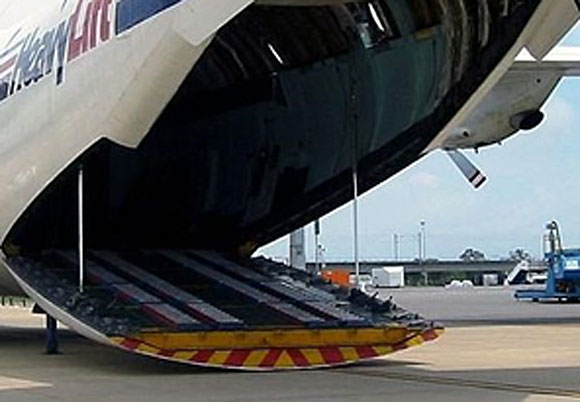
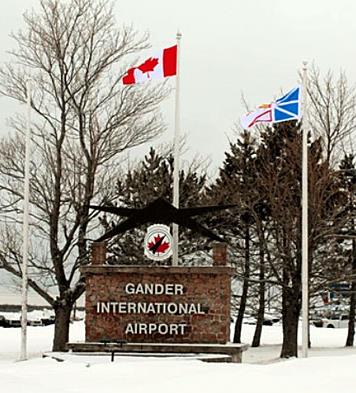
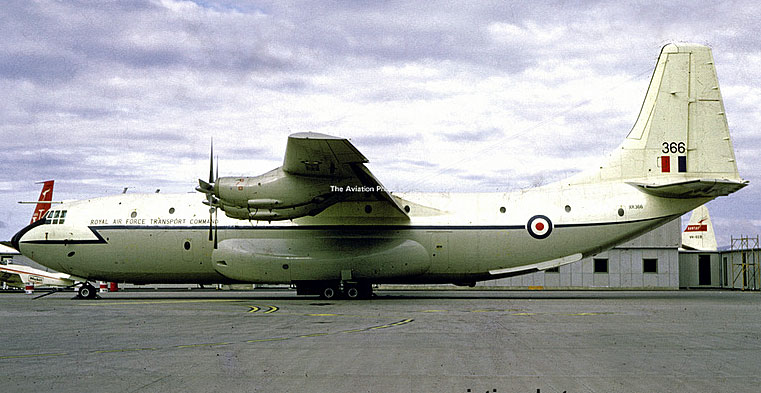
Gander International Airport - Feb 1975
Our replacement Belfast XR366 ("Atlas") - not shown at Gander
Eventually we secured the aircraft for the night and retired to a hotel downtown. Several more phone calls were made to “crunch out” a plot. As our aircraft (XR368) was now unable to carry out the task, a revised plot was hatched: 1) Another Belfast was already in the USA on a training task and would be diverted to us. 2) The MAMS Team would offload the present aircraft. 3) They would then de-role the aircraft of it’s roller side guidance. 4) When the replacement aircraft arrived they would proceed to re-role it. 5) Finally, they would back load the 10 pallets of explosives.
What was the hiccup in this plot? We were dressed for the beach, not Arctic conditions! As the saying goes, “Flexibility is the Key to Air Power!” On the 16th February, we returned to the Airport already wearing a few layers of clothing from our suitcases which we had brought with us. Through the Handling Agent, we were then all issued with lovely heavy duty Air Canada parkas, Beanie Hats and thick gloves. We had also arranged for a large forklift, capable of lifting up to 10,500lbs to meet us at the aircraft. The forklift they produced was quite scary as it had a very high mast and there was always a fear of it striking the roof of the open aircraft freight door. Slowly but surely we were managing to offload the pallets. Where to put them down was also a problem and some ingenuity was required.
What was the hiccup in this plot? We were dressed for the beach, not Arctic conditions! As the saying goes, “Flexibility is the Key to Air Power!” On the 16th February, we returned to the Airport already wearing a few layers of clothing from our suitcases which we had brought with us. Through the Handling Agent, we were then all issued with lovely heavy duty Air Canada parkas, Beanie Hats and thick gloves. We had also arranged for a large forklift, capable of lifting up to 10,500lbs to meet us at the aircraft. The forklift they produced was quite scary as it had a very high mast and there was always a fear of it striking the roof of the open aircraft freight door. Slowly but surely we were managing to offload the pallets. Where to put them down was also a problem and some ingenuity was required.
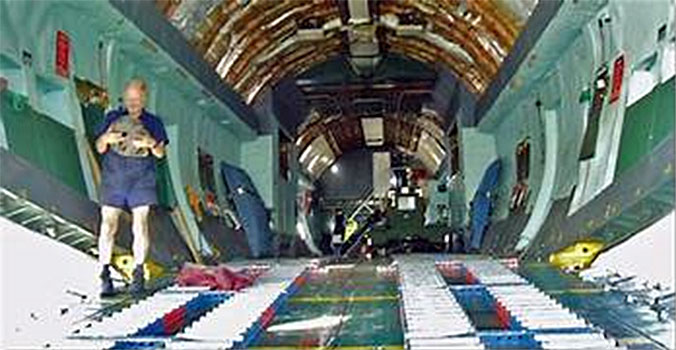
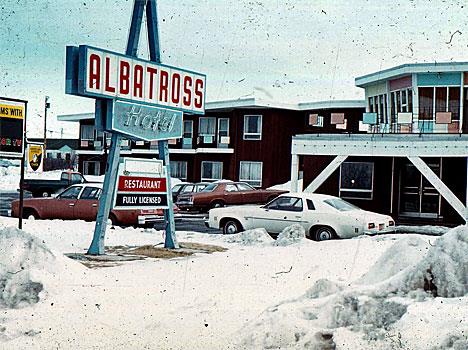
The Albatross Hotel, Gander
Picture showing the length of the aircraft to de-role and re-role
According to www.almanac.com, the outside temperature at Gander Airport that day was -16.7ºC. Snow clearance at Gander was efficient and so all the pans and taxiways were clear, although there was the odd swirl of snow. We had already decided that we would work in pairs and spend 60mins in the open/aircraft and 30mins sat in the heated minibus. That meant a fresh pair appeared every 30mins.
De-roling the aircraft floor came next and this can be “fiddly” and tiring as there are an awful lot of beams and roller. The whole offload and de-role took us about five hours. During this period the Aircraft Captain made an appearance to see how we were getting on. We were also pleasantly surprised when he appeared later with an urn of coffee provided by the Airport Caterers, paid for out of his imprest and also containing a strong addition of the local rum – Screech!
With impeccable timing, the replacement Belfast arrived, XR366 (Atlas). It was parked close to our broken one and we began the re-role. Our spirits were high, both literally and figuratively! However, the cold was strength sapping and it was probably another five hours before all was loaded back on board, safely restrained and safe to fly. In the meantime, our crew had also returned to the Airport. A handover between crews took place, ours very much the happier crew! A visit to Flight Planning and then we were ready to try again to leave Gander.
De-roling the aircraft floor came next and this can be “fiddly” and tiring as there are an awful lot of beams and roller. The whole offload and de-role took us about five hours. During this period the Aircraft Captain made an appearance to see how we were getting on. We were also pleasantly surprised when he appeared later with an urn of coffee provided by the Airport Caterers, paid for out of his imprest and also containing a strong addition of the local rum – Screech!
With impeccable timing, the replacement Belfast arrived, XR366 (Atlas). It was parked close to our broken one and we began the re-role. Our spirits were high, both literally and figuratively! However, the cold was strength sapping and it was probably another five hours before all was loaded back on board, safely restrained and safe to fly. In the meantime, our crew had also returned to the Airport. A handover between crews took place, ours very much the happier crew! A visit to Flight Planning and then we were ready to try again to leave Gander.

This time the take off was uneventful and the undercarriage behaved itself. The flight down to Andrews AFB took another 5hrs 20mins but after the stresses of the previous 48hrs we all began to chill and enjoy the flight. It was midnight when we arrived at the home of Air Force One. +6ºC but wet and miserable. The bonus was we stayed local for the night and so minimum transit time and there was a bar next to the hotel. Just 14 hrs later we were heading South again, this time on down to Homestead AFB, near Miami, (3hrs 50mins) for a refuel and then straight on to Belize on a leg lasting 3hrs 30mins. All these stops had the same time zone, GMT -5 hours, so no time adjustments. One has to remember also that our ports of call were dictated by the load we were carrying and where they could accommodate that.
At last we had arrived in Belize, the local temperature was +28ºC and what we had been dreaming about for days. At this stage in Belize, there was no RAF Airport Unit and so all our needs were put through the ATLO (Air Transport Liaison Officer - known throughout the world as a soldier with a clipboard!). Eventually we got all the assistance we wanted through Rudi, the Handling Agent who was literally “Mr Fixit”. Although taking a while, we finally passed on the ammunition to the Army and proceeded to backload whatever spares and equipment they wanted returned to UK. At long last we wore our KD and even removed our ties! Once in the hotel, out came the shorts and the first glass of Appleton’s Rum was partaken. This trip, for once I felt no guilt and thought we’d earned it.
Pure luxury this time, a 17hr night stop. As most of our work was done we could have a couple of hours looking around the town and a swim before changing and heading back to the airport.
We departed Belize in the afternoon and headed for Bermuda, some 6hrs 30mins flying time away. In 1975, there was still a military presence in Bermuda, primarily Royal Navy. There were two or three Frigates based there and operated from HMS Malabar, the Navy Dockyard. The RAF had a presence too, namely a RAFLO (RAF Liaison Officer) who looked after all matters RAF. The present incumbent was a FSgt Arthur Taylor who had previously served as a Sgt on our squadron. As part of our team was his old mate FSgt Baz Shatford, who was about to be promoted Warrant Officer. When the two were together it always spelt mischief!
At last we had arrived in Belize, the local temperature was +28ºC and what we had been dreaming about for days. At this stage in Belize, there was no RAF Airport Unit and so all our needs were put through the ATLO (Air Transport Liaison Officer - known throughout the world as a soldier with a clipboard!). Eventually we got all the assistance we wanted through Rudi, the Handling Agent who was literally “Mr Fixit”. Although taking a while, we finally passed on the ammunition to the Army and proceeded to backload whatever spares and equipment they wanted returned to UK. At long last we wore our KD and even removed our ties! Once in the hotel, out came the shorts and the first glass of Appleton’s Rum was partaken. This trip, for once I felt no guilt and thought we’d earned it.
Pure luxury this time, a 17hr night stop. As most of our work was done we could have a couple of hours looking around the town and a swim before changing and heading back to the airport.
We departed Belize in the afternoon and headed for Bermuda, some 6hrs 30mins flying time away. In 1975, there was still a military presence in Bermuda, primarily Royal Navy. There were two or three Frigates based there and operated from HMS Malabar, the Navy Dockyard. The RAF had a presence too, namely a RAFLO (RAF Liaison Officer) who looked after all matters RAF. The present incumbent was a FSgt Arthur Taylor who had previously served as a Sgt on our squadron. As part of our team was his old mate FSgt Baz Shatford, who was about to be promoted Warrant Officer. When the two were together it always spelt mischief!
When we arrived in Bermuda the aircraft was parked on the US Naval Air Station side of the International Airport. The RAFLO was there to greet our arrival and quickly got down to business, organising refuelling, transport, catering and accommodation. He advised the operating crew that we were all accommodated in the Castle Harbour Hotel, a famous five star hotel on the Island. Everyone was impressed but he told the MAMS Team to hold back and use the second minibus. When we arrived at the hotel the operating crew had already collected their room keys and done a “bomb burst.” We were then given ours. Arthur had excelled himself and we were all accommodated in chalets on the sea front, surrounded by palm trees. He really had spoilt his old mate, Baz. We agreed to meet up in his chalet once we were washed and changed. When Baz let me into his chalet it was unbelievable. His accommodation was totally self contained but also had a fully stocked full size bar. Arthur was there too and said “everything was on the house!
Next morning, we reversed the trip from the Airfield and boarded our trusty Belfast, Atlas, again. Having said our farewells to the RAFLO we were once again on our way. This time to our penultimate stop, Lajes in the Azores some 6hrs 50mins flying time away. Lajes is also another US Naval Air Station and everyone loved to call in there. From the Class 6 (Duty Free Liquor Store) to their in-flight catering, it was top notch. (I called in there on The Queen Victoria two years ago and sadly it is now on “Care & Maintenance”, totally rundown).
So now on the 20th February we boarded our aircraft for the last 5hr leg back to Brize Norton. Laden down with Bacardi and Zippo cigarette lighters we departed Lajes in a very good mood. This certainly was a swansong to remember and just as well we didn’t have to explain why someone in KD got frostbite!
It transpired later that the Belfast C1 was not supposed to transit certain areas with low temperatures in Winter and this is possibly why the undercarriage doors froze.
So now on the 20th February we boarded our aircraft for the last 5hr leg back to Brize Norton. Laden down with Bacardi and Zippo cigarette lighters we departed Lajes in a very good mood. This certainly was a swansong to remember and just as well we didn’t have to explain why someone in KD got frostbite!
It transpired later that the Belfast C1 was not supposed to transit certain areas with low temperatures in Winter and this is possibly why the undercarriage doors froze.
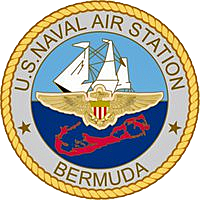

Thursday's Comet to the Far East

From: Andy Spinks, Falmouth, Cornwall
Subject: MISHAPS
Hi Tony,
Maybe not exactly mishaps in some cases, but four events spring to mind.
1. A Damaged Herc. This was pre-MAMS for me, but does involve MAMS training! I was a DAMO at Masirah (Paddy Gallagher was SAMO, Dave Eggleton the other DAMO). The shift pattern at Masirah was 24 on, 24 off, starting and finishing at midday. So, if there were several aircraft arriving overnight or night stopping, it could be a very tiring shift. And so it was on the night in question, with several aircraft stopping over and us having to put one of the night stopping aircraft (a Herc) to bed in the wee small hours after the unload and backload. It was left to my Sgt (who shall remain nameless, as he has gone to join the MAMS team in the sky, RIP) to close the aircraft. I guess there was a GE on board but the said Sgt was ex-UKMAMS and previously qualified to close the ramp. Unfortunately, fatigue was a factor and he tried to close the ramp door without first lifting the door to release the lock. The locking mechanism was pulled from the roof and the aircraft then looked very poorly with a u/s door. The DAMO (myself) was summoned to see the Station Commander next morning for an interview without coffee. And, for the rest of the tour, I was rather unfairly always seated ‘below the salt’ at dining-in nights. The Station Commander was an ex-Vulcan navigator and OC Ops was also not an AT man; basically neither understood movers or, probably, what we had to do to keep the staging post operational.
Subject: MISHAPS
Hi Tony,
Maybe not exactly mishaps in some cases, but four events spring to mind.
1. A Damaged Herc. This was pre-MAMS for me, but does involve MAMS training! I was a DAMO at Masirah (Paddy Gallagher was SAMO, Dave Eggleton the other DAMO). The shift pattern at Masirah was 24 on, 24 off, starting and finishing at midday. So, if there were several aircraft arriving overnight or night stopping, it could be a very tiring shift. And so it was on the night in question, with several aircraft stopping over and us having to put one of the night stopping aircraft (a Herc) to bed in the wee small hours after the unload and backload. It was left to my Sgt (who shall remain nameless, as he has gone to join the MAMS team in the sky, RIP) to close the aircraft. I guess there was a GE on board but the said Sgt was ex-UKMAMS and previously qualified to close the ramp. Unfortunately, fatigue was a factor and he tried to close the ramp door without first lifting the door to release the lock. The locking mechanism was pulled from the roof and the aircraft then looked very poorly with a u/s door. The DAMO (myself) was summoned to see the Station Commander next morning for an interview without coffee. And, for the rest of the tour, I was rather unfairly always seated ‘below the salt’ at dining-in nights. The Station Commander was an ex-Vulcan navigator and OC Ops was also not an AT man; basically neither understood movers or, probably, what we had to do to keep the staging post operational.

2. An Horrendous Belfast Task. The task was to load exercise freight from Bandar Abbass in Iran (it was 1975, before the revolution). The task was a stinker; we basically lived on the aircraft for nearly 48 hours as it slipped crews twice along the way. The outbound was via flag stops at Luqa and Akrotiri (crew change) to Masirah for a short night-stop. The outbound trip took 20 hours. The return from Masirah to Bandar Abbass and onto UK was worse. Masirah to Bandar Abbass, load freight (3 hours), then short stops in Dubai and Akrotiri for fuel (and another crew change) before a further 9 hours to Brize. Another 27 hours in the back of the Belfast. We were already exhausted on climb out from Bandar Abbass and the team wanted to use the crew bunks, to which I naively agreed. I was new to MAMS at this stage and did not think to ask the Loadie or Capt for permission (my mishap). I was soon violently shaken awake and summoned to the flight deck to be given a severe bol***king by the Capt. He was very angry. But I was angry that we had two very long days without a decent sleep and he was unwilling to see my side of the story. Mishap and lesson learned: ask for permission - although I suspect the crew would have wanted to use a bunk or two on rotation so probably wouldn’t have agreed to us using it anyway!
3. A Missing Aircraft. We were tasked to an unusual location: Timehri in Guyana (South America) to exchange exercise forces between the Guyanese and Brits. We deployed on a VC10 through Bermuda and the exchange of troops at a remote military base in Guyana went well – all British forces flew out on the VC10. We were then supposed to recover on a Herc which was due in with the Guyanese freight about the time the VC10 left. However, as evening approached and with no sign of the Herc, I felt I should go and find an Ops Room somewhere to investigate. Being 1977, this was well before mobile phones or the internet so comms were not easy. Long story short, we eventually discovered the Herc was delayed somewhere along its route (no real surprise) and we were left hanging at a remote military base in Guyana. No local money (although I may have had a few US dollars in the imprest) and no accommodation booked. I feel this was where I actually added value as a TL. In spite of the fast-approaching night, I somehow or other managed to get to the British Embassy and obtain funds with my Letter of Authority and they also booked hotel rooms for us. We then played a waiting game for nearly 3 days until the Herc finally arrived. A mishap on our part – certainly not! A mishap, yes, but a pleasant unexpected stay for us in an English-speaking part of South America. With the internet and mobile phones, it wouldn’t happen today but in those WIWOM days, this was certainly a leadership challenge.
4. An Over-Zealous Route Checker. I was on base at Lyneham as DAMO (in our days, the TLs rotated onto base as DAMO for a few months every year). I was seeing off a Belize flight and the Loadie was one of the decent ones. The shift had loaded some DAC next to the rear para door. In spite of my mobile team sergeant's advice when joining MAMS that I did not need to check loads before signing the trim sheet, I ignored his advice and always found the time to check. So I had seen the way the DAC had been loaded and was satisfied that it was the safest way to restrain it - although not ideal. The problem was that they were loose small medical gas cylinders, each about the size of a small bottle of water. The baggage net and lashing tape was not a brilliant restraint but the Loadie and I agreed it was the best we could do. Off went the aircraft. Next evening, I had a very distraught call from the Loadie. They had flagged at Nassau, a route checker had got on (what a surprise he was lurking in Nassau), checked the load and immediately E-catted the poor Loadie for accepting the cylinders. Fortunately I remembered the load and was able to draw a sketch for the Loadmaster Leader back at base. I am not sure even now if it was a mishap. Sometimes the operational need requires considered risks to be taken; that is what good militaries should do IMHO.
Thanks as always for your great work!
Regards,
Andy
Thanks as always for your great work!
Regards,
Andy

From: Gus Turney, Chippenham, Wilts
Subject: Mishaps
The Elgin/Eglin Episode - The Rest of the Story
Hi Tony,
The "unnamed " team leader was my team boss, and I was present at the briefing, so I can clarify a few details. According to my tatty old flying logbook, the task was scheduled for 1st to the 12th November 1984, and was clearly marked on the Ops board as a long blue line (blue denoted overseas jobs, as opposed to yellow tape, which meant a UK task). As I was not familiar with Eglin AFB, I asked about, and discovered it was located on the Gulf coast of Florida, close to the small city of Ft. Walton Beach. "Great, a USA job" I thought, and left it at that.
Normal procedure was for the team to brief in the crew room at 10:00 the day before departure to finalise details. On the appointed day, I met up with my fellow team members (Mick Day, Tony Last, and I think possibly Dibs Loveridge), and waited for the boss to join us with the task folder, and commence the brief. I was a bit surprised when the Boss announced that we were off to Scotland, and would be deploying by Landrover.
Being a mere SAC I said nothing, but I did throw a quizzical look towards Mick and Tony. We let the boss finish the brief, after which Mick had a quiet word with our leader out of earshot. It turns out our boss had indeed confused Elgin, Scotland, with Eglin AFB, Florida. A short while later, a second briefing was delivered, more appropriate to the task and destination. It was a fairly uneventful job involving the usual Tornado crap, in a nice part of Florida. The boss was good as gold after this little faux pas, and I did several more jobs with him, with no problems.
The highlight of the task for me, was when I ignored local advice, and took a shortcut from the Eglin pan to the Tornado Ops block, via some typical Florida scrub. It was a warm night, and I was wearing shorts. As I walked across the bondu in the dark, I suddenly felt a sharp pain in the back of my left calf. Fearing a snake bite (not unheard of in them parts), I was whisked off to the base hospital for treatment. The duty nurse then pulled out a couple of 1" cactus needles from my leg. I learned my lesson, heeded local knowledge and stuck to the well-lit taxi ways after that!
Regards,
Gus
TG: So, the boss didn’t actually end up in Scotland as previously indicated?
GT: I don't recall him actually going to Scotland. As I say, at the brief, he was convinced we were off to Scotland. He flew out with us to Eglin though.
Subject: Mishaps
The Elgin/Eglin Episode - The Rest of the Story
Hi Tony,
The "unnamed " team leader was my team boss, and I was present at the briefing, so I can clarify a few details. According to my tatty old flying logbook, the task was scheduled for 1st to the 12th November 1984, and was clearly marked on the Ops board as a long blue line (blue denoted overseas jobs, as opposed to yellow tape, which meant a UK task). As I was not familiar with Eglin AFB, I asked about, and discovered it was located on the Gulf coast of Florida, close to the small city of Ft. Walton Beach. "Great, a USA job" I thought, and left it at that.
Normal procedure was for the team to brief in the crew room at 10:00 the day before departure to finalise details. On the appointed day, I met up with my fellow team members (Mick Day, Tony Last, and I think possibly Dibs Loveridge), and waited for the boss to join us with the task folder, and commence the brief. I was a bit surprised when the Boss announced that we were off to Scotland, and would be deploying by Landrover.
Being a mere SAC I said nothing, but I did throw a quizzical look towards Mick and Tony. We let the boss finish the brief, after which Mick had a quiet word with our leader out of earshot. It turns out our boss had indeed confused Elgin, Scotland, with Eglin AFB, Florida. A short while later, a second briefing was delivered, more appropriate to the task and destination. It was a fairly uneventful job involving the usual Tornado crap, in a nice part of Florida. The boss was good as gold after this little faux pas, and I did several more jobs with him, with no problems.
The highlight of the task for me, was when I ignored local advice, and took a shortcut from the Eglin pan to the Tornado Ops block, via some typical Florida scrub. It was a warm night, and I was wearing shorts. As I walked across the bondu in the dark, I suddenly felt a sharp pain in the back of my left calf. Fearing a snake bite (not unheard of in them parts), I was whisked off to the base hospital for treatment. The duty nurse then pulled out a couple of 1" cactus needles from my leg. I learned my lesson, heeded local knowledge and stuck to the well-lit taxi ways after that!
Regards,
Gus
TG: So, the boss didn’t actually end up in Scotland as previously indicated?
GT: I don't recall him actually going to Scotland. As I say, at the brief, he was convinced we were off to Scotland. He flew out with us to Eglin though.


Bangladesh Air Force completes C-130J fleet
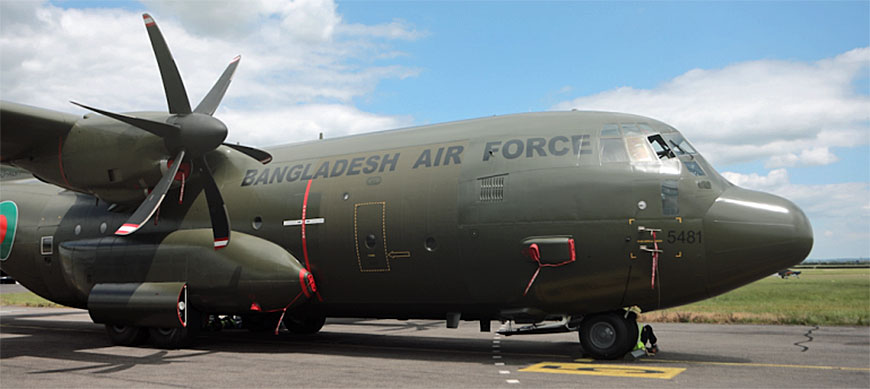
Bangladesh Air Force received its final C-130J, completing a five year upgrade to the fleet, and improving the airlift capability
Marshall Aerospace delivered the final C-130J Super Hercules aircraft to the Bangladesh Air Force (BAF), completing a five-year programme to upgrade the fleet. This handover, which took place at Marshall’s headquarters in Cambridge, on 24 June 2024, marks a significant development in Bangladesh’s efforts to enhance its airlift capacity.
The project began in 2018 with the acquisition of the aircraft from the UK Ministry of Defence. The programme’s major components included decommissioning the aircraft from their previous roles in the UK Royal Air Force, upgrading avionics, and enhancing the aircraft’s capabilities for passenger transport and survival operations.
Her Excellency Saida Muna Tasneem, High Commissioner of Bangladesh to the UK and Ireland, stated, “I am delighted to be here to preside over a proud moment for the entire Bangladesh Air Force, as we mark the culmination of a multi-year Investment into our fleets towards realisation of Forces Goal 2030 as envisioned by Prime Minister Her Excellency Sheikh Hasina. The work performed here in Cambridge will directly support us in fulfilling our operational commitments for decades to come, and I would like to thank the Marshall team for their expertise and commitment.”
Marshall’s commitment to the project extends beyond the delivery of the aircraft. The company will continue to support the BAF with additional modifications and technical services. This includes global engineering support, supply chain and logistics management, spare parts procurement, and training provision.
airforce-technology.com
The project began in 2018 with the acquisition of the aircraft from the UK Ministry of Defence. The programme’s major components included decommissioning the aircraft from their previous roles in the UK Royal Air Force, upgrading avionics, and enhancing the aircraft’s capabilities for passenger transport and survival operations.
Her Excellency Saida Muna Tasneem, High Commissioner of Bangladesh to the UK and Ireland, stated, “I am delighted to be here to preside over a proud moment for the entire Bangladesh Air Force, as we mark the culmination of a multi-year Investment into our fleets towards realisation of Forces Goal 2030 as envisioned by Prime Minister Her Excellency Sheikh Hasina. The work performed here in Cambridge will directly support us in fulfilling our operational commitments for decades to come, and I would like to thank the Marshall team for their expertise and commitment.”
Marshall’s commitment to the project extends beyond the delivery of the aircraft. The company will continue to support the BAF with additional modifications and technical services. This includes global engineering support, supply chain and logistics management, spare parts procurement, and training provision.
airforce-technology.com

From: Ray Wallace, Swindon, Wilts
Subject: Mishaps
Hi Tony,
Regarding the tale about Elgin and Eglin - I was working in MAMS Ops when something similar occurred. We received a phone call from a team leader asking where they could refuel their Landrover in Carlisle when they were en-route to Elgin in Scotland.
Luckily, they returned just in time to catch the C130 flight to Eglin, Florida!
Good times,
Ray
Subject: Mishaps
Hi Tony,
Regarding the tale about Elgin and Eglin - I was working in MAMS Ops when something similar occurred. We received a phone call from a team leader asking where they could refuel their Landrover in Carlisle when they were en-route to Elgin in Scotland.
Luckily, they returned just in time to catch the C130 flight to Eglin, Florida!
Good times,
Ray


From: Meirion (Taff) Jones, Barry, Glamorgan
Subject: Re: Memorable Exercises
Hi Tony,
Just to add a bit of colour to Peter Clayton's Tromso adventure - 1st-3rd March 1976. On our way to the hotel after work, we had to negotiate a steep downhill crossroads with traffic lights. These we always approached very gingerly just in case the light turned red. Imagine our surprise on one occasion to be overtaken by two small boys on what looked suspiciously like their mother's tea trays. By the time we had closed our jaw dropped mouths, they had disappeared!
I seem to recall this task involved some heavy lifting and my occasional backache reminds me of Tromso!
Meirion (Taff) Jones
A Team UKMAMS 1974-1977
Subject: Re: Memorable Exercises
Hi Tony,
Just to add a bit of colour to Peter Clayton's Tromso adventure - 1st-3rd March 1976. On our way to the hotel after work, we had to negotiate a steep downhill crossroads with traffic lights. These we always approached very gingerly just in case the light turned red. Imagine our surprise on one occasion to be overtaken by two small boys on what looked suspiciously like their mother's tea trays. By the time we had closed our jaw dropped mouths, they had disappeared!
I seem to recall this task involved some heavy lifting and my occasional backache reminds me of Tromso!
Meirion (Taff) Jones
A Team UKMAMS 1974-1977


From: Graham Allen, Cropwell Butler, Notts
Subject: Mishaps
Hi Tony,
The Elgin story reminded me of an incident whilst I was working for Antonov. I was out shopping with my good lady and got home to see my telephone light flashing indicating a message. I listened to it and it was from the office asking me to get to Orlando ASAP. I phoned LHR, I could only get a standby as everything was fully booked. I arrived and nearly everyone had turned up. LHR, I could only get a standby as everything was fully booked. I arrived and nearly everyone had turned up. While I was waiting to see if I could get on, the crew from Virgin showed up and as I was in uniform I told them I needed to get out to Orlando to join my aircraft. The response, "Well, our jump seat is available if you want to come with us!" Great, many thanks. Had a pleasant flight, thanked the crew and waited for the arrival of my aircraft.
The time of its arrival had come and gone so I called into ops to see if they had heard why there is a delay. The answer was not what I expected, "It’s not due here."
I phoned the office to find out what was going on and was told quite irately that I should be in Arlanda, Sweden, not the USA. They asked why I was there and not where I should be and it transpired that the other flight manager (who I always had trouble with) thought it would be funny getting me out of the way so he could get the Rio job and not me! Well, that backfired on him as he was released! Luckily the load that was due to arrive in Arlanda was delayed by 48 hours giving me the chance to get back from the USA to London then fly up to Sweden. I arrived 3 hours before the cargo! We flew two large turbines down to Rio de Janeiro. I was ready for the 10 day break when we unloaded!
Happy days!
All the best
Graham
Subject: Mishaps
Hi Tony,
The Elgin story reminded me of an incident whilst I was working for Antonov. I was out shopping with my good lady and got home to see my telephone light flashing indicating a message. I listened to it and it was from the office asking me to get to Orlando ASAP. I phoned LHR, I could only get a standby as everything was fully booked. I arrived and nearly everyone had turned up. LHR, I could only get a standby as everything was fully booked. I arrived and nearly everyone had turned up. While I was waiting to see if I could get on, the crew from Virgin showed up and as I was in uniform I told them I needed to get out to Orlando to join my aircraft. The response, "Well, our jump seat is available if you want to come with us!" Great, many thanks. Had a pleasant flight, thanked the crew and waited for the arrival of my aircraft.
The time of its arrival had come and gone so I called into ops to see if they had heard why there is a delay. The answer was not what I expected, "It’s not due here."
I phoned the office to find out what was going on and was told quite irately that I should be in Arlanda, Sweden, not the USA. They asked why I was there and not where I should be and it transpired that the other flight manager (who I always had trouble with) thought it would be funny getting me out of the way so he could get the Rio job and not me! Well, that backfired on him as he was released! Luckily the load that was due to arrive in Arlanda was delayed by 48 hours giving me the chance to get back from the USA to London then fly up to Sweden. I arrived 3 hours before the cargo! We flew two large turbines down to Rio de Janeiro. I was ready for the 10 day break when we unloaded!
Happy days!
All the best
Graham


From: Brian Carlin, San Diego, CA
Subject: Mishaps
Hi Tony,
I have a "mishap" story that you might like to include in your newsletter. That's if it qualifies because it's something that happened after I left the service. But I'll let you be the judge. It's series of events that occurred after I had returned to civilian life and worked as a project manager for an industrial gas turbine manufacturer in San Diego, California.
Just to explain; an industrial gas turbine is similar to a jet engine but of more rugged design and is used for driving rotating equipment such as an electrical generator more powerfully than can be achieved with a diesel engine. Typically, the gas turbine is mounted on a structural steel frame, complete with a fuel and lubricating oil system. This is known as a gas turbine package, which is then very often enveloped in a weatherproof, soundproof enclosure. Most commonly, these packages are employed in the oil industry, either offshore or onshore where the readily available natural gas fuel is used to power them.
In 1991, two of these packages were sold to a Dutch company and in mid-December were shipped by surface freight to the port of Rotterdam. Unfortunately, the ship ran into a powerful storm on its voyage across the Atlantic. Both packages hadn’t been adequately secured in the ship’s hold and suffered severe damage as a result of being tossed around as the ship battled its way through the heavy seas. As the project manager responsible for all aspects of the manufacture and eventual site installation of the equipment the client contacted me to arrange for the packages to be returned to our factory for repair, and because the site installation was critical to their overall schedule, they arranged for the packages to be returned to San Diego by air freight.
In those days, no single civilian aircraft in the western world was capable of loading the two packages and the only available aircraft large enough was operated by a Russian company named Jet Air Cargo. Therefore, the client chartered their Ilyushin 76 for the job.
Subject: Mishaps
Hi Tony,
I have a "mishap" story that you might like to include in your newsletter. That's if it qualifies because it's something that happened after I left the service. But I'll let you be the judge. It's series of events that occurred after I had returned to civilian life and worked as a project manager for an industrial gas turbine manufacturer in San Diego, California.
Just to explain; an industrial gas turbine is similar to a jet engine but of more rugged design and is used for driving rotating equipment such as an electrical generator more powerfully than can be achieved with a diesel engine. Typically, the gas turbine is mounted on a structural steel frame, complete with a fuel and lubricating oil system. This is known as a gas turbine package, which is then very often enveloped in a weatherproof, soundproof enclosure. Most commonly, these packages are employed in the oil industry, either offshore or onshore where the readily available natural gas fuel is used to power them.
In 1991, two of these packages were sold to a Dutch company and in mid-December were shipped by surface freight to the port of Rotterdam. Unfortunately, the ship ran into a powerful storm on its voyage across the Atlantic. Both packages hadn’t been adequately secured in the ship’s hold and suffered severe damage as a result of being tossed around as the ship battled its way through the heavy seas. As the project manager responsible for all aspects of the manufacture and eventual site installation of the equipment the client contacted me to arrange for the packages to be returned to our factory for repair, and because the site installation was critical to their overall schedule, they arranged for the packages to be returned to San Diego by air freight.
In those days, no single civilian aircraft in the western world was capable of loading the two packages and the only available aircraft large enough was operated by a Russian company named Jet Air Cargo. Therefore, the client chartered their Ilyushin 76 for the job.
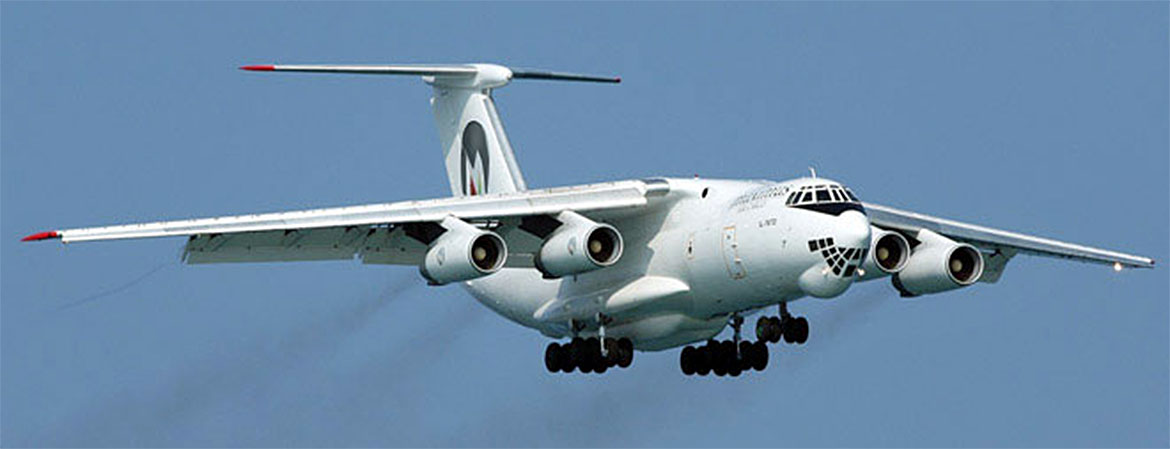
An Ilyushin IL-76 (shown in the livery of Maximus Air)
Now, the first mishap we encountered, as described above, was due to Mother Nature but the second was due to government bureaucracy. Although the client acted promptly in arranging the air transport, it was 7 January 1992 before the aircraft was scheduled to arrive. That date may seem insignificant, except for one minor detail – as the clock struck midnight on the 31st of December, heralding the New Year of 1992, the USSR ceased to exist. As a result, the American Federal Aviation Authority (FAA) would not permit the Il-76 to enter USA air space because it was “unflagged.” So, instead of flying the Great Circle route close to Greenland and Iceland and eventually to the American West Coast via Canada, it was obliged to fly a southerly route, making two refueling stops on the way, one in the Azores and the other in Cuba, with the final destination of Tijuana, Mexico, just across the USA/Mexican border from San Diego.
Together with two of my firm’s traffic people, I traveled across the border that morning to the Tijuana airport to receive the Il-76 and greet the client’s project manager, who was traveling on the Russian aircraft with the damaged packages. We watched the Il-76 land and taxi to its designated parking spot, where we three, in the company of the Tijuana airport freight representatives awaited it. I greeted the client as he disembarked while the rear aircraft ramp was lowered for access to the damaged packages.
Together with two of my firm’s traffic people, I traveled across the border that morning to the Tijuana airport to receive the Il-76 and greet the client’s project manager, who was traveling on the Russian aircraft with the damaged packages. We watched the Il-76 land and taxi to its designated parking spot, where we three, in the company of the Tijuana airport freight representatives awaited it. I greeted the client as he disembarked while the rear aircraft ramp was lowered for access to the damaged packages.
It was then that the third mishap reared its ugly head. The ramp only lowered to a horizontal position, leaving a considerable distance between it and the concrete below. There was no way to get the packages on the ground where a crane could pick them up and load them onto a vehicle. Meanwhile, word must have been passed to the Tijuana media because we were suddenly deluged by newspaper reporters and television crews. Apparently, the Il-76 was the largest aircraft to have ever visited Tijuana and was therefore a magnet for the press. They weren’t interested in us but wanted only to talk to the aircraft crew. It was getting late in the day before they all left and gave us a chance to figure out how to unload the packages. In the end, it all came down to a Heath Robinson solution, using planks of wood gathered up from around the airport with the help of the local reps. In that way, we were able to build a ramp of sorts that allowed us to slide the packages down onto terra firma. The final hurdle was getting the packages through customs at the border on their way to our factory in San Diego, but I was personally able to skip that ordeal, but our traffic people were forced to deal with it.
It was a happier story shipping the repaired packages back to the Netherlands. By that time, the FAA had recognized the new Russian government, and by a stroke of good fortune, another Russian aircraft, this time a giant Antonov 124 had landed in San Diego airport, carrying challengers’ yachts for participation in the Americas Cup race, that was being held offshore San Diego that year. The Antonov was better equipped to load and unload the packages, having its own internal overhead crane. So we had a happy ending to the saga.
Best regards
Brian
Electrical Technician Air
Author: “Boy Entrant” and “On the line in the Far East”
It was a happier story shipping the repaired packages back to the Netherlands. By that time, the FAA had recognized the new Russian government, and by a stroke of good fortune, another Russian aircraft, this time a giant Antonov 124 had landed in San Diego airport, carrying challengers’ yachts for participation in the Americas Cup race, that was being held offshore San Diego that year. The Antonov was better equipped to load and unload the packages, having its own internal overhead crane. So we had a happy ending to the saga.
Best regards
Brian
Electrical Technician Air
Author: “Boy Entrant” and “On the line in the Far East”


A Little Bit of RAF Humour
RAF Robin Hood, when it was a Nav training school. Small, blonde, rather sexy WRAF Cpl in Flight Planning is counting out the tea swindle money. Flt Lt QNI enters room (he is a fully qualified tosser), says to WRAF Cpl, "Can you change a fiver for me?"
She answers, "Yes".
He counters, "Don't you mean yes sir?"
She replies, "Sorry sir."
He says, "Shall we start again?"
She said, "Alright sir."
He said, "Can you change a fiver for me?"
To which she responded, "I'm afraid not, sir."
---------------------------------------
Bulk Fuel Installation No 7, RAF Gutersloh, very early 70's, Taceval. Distaff hand inject paper to young SAC- "BFI on fire - take appropriate action". Young SAC places inject paper on ground and pee's on it! Awarded 7 days and 200 Mark fine (paid for by a whip round amongst one's fellow stackers).
--------------------------------------
It’s the mid-seventies. Prestigious Air Defence Sqn based in Scotland, on a station near the most famous golf course in the world, is going to be given a new standard. Youngish, thrusting, high flier just been promoted and posted in as Sqn Cdr decides the standard presentation parade will be the best set-piece of drill ever seen in the RAF. Has the Sqn Warrant Officer drill the troops day and night for weeks until they are near perfect. Early start on the important day. Officers’ married quarters quite a long way from the Sqn HQ so Transit van organized to collect all the officers (troops did it on foot). Sqn Cdr, fully booted and spurred in ceremonial uniform but can’t find gloves (soft brown cape leather). Transit turns up and toots horn, nothing happens. No. 1 Flight Commander calls from the bus window, “Come on boss it’s time to go.”
Still can’t find gloves – losing reason to live - Sqn Cdr calls back, “Off you go, I’ll catch up with you in a minute.” Sqn Cdr, a pipe smoker, suddenly realises that his tobacco pouch (soft brown cape leather) would double for a pair of gloves if folded over and held in his left hand – salvation at last. He leaps on his bicycle and manages to get to the parade with nanoseconds to spare. Sqn Cdr marches on, leading the troops and parade goes as planned. March back to Sqn HQ, dismiss officers, dismiss troops. Sqn Cdr turns to Sqn WO, says, “Well, Mr. Smith, I think the parade went perfectly and I don’t suppose anyone even noticed that I was holding a tobacco pouch?".
Mr. Smith replies, “No sir, they didn’t.”
Sqn Cdr asks, “How can you be so sure, Mr. Smith?”
Mr. Smith replies, “Well sir, they would have been too busy looking at your bicycle clips!”
She answers, "Yes".
He counters, "Don't you mean yes sir?"
She replies, "Sorry sir."
He says, "Shall we start again?"
She said, "Alright sir."
He said, "Can you change a fiver for me?"
To which she responded, "I'm afraid not, sir."
---------------------------------------
Bulk Fuel Installation No 7, RAF Gutersloh, very early 70's, Taceval. Distaff hand inject paper to young SAC- "BFI on fire - take appropriate action". Young SAC places inject paper on ground and pee's on it! Awarded 7 days and 200 Mark fine (paid for by a whip round amongst one's fellow stackers).
--------------------------------------
It’s the mid-seventies. Prestigious Air Defence Sqn based in Scotland, on a station near the most famous golf course in the world, is going to be given a new standard. Youngish, thrusting, high flier just been promoted and posted in as Sqn Cdr decides the standard presentation parade will be the best set-piece of drill ever seen in the RAF. Has the Sqn Warrant Officer drill the troops day and night for weeks until they are near perfect. Early start on the important day. Officers’ married quarters quite a long way from the Sqn HQ so Transit van organized to collect all the officers (troops did it on foot). Sqn Cdr, fully booted and spurred in ceremonial uniform but can’t find gloves (soft brown cape leather). Transit turns up and toots horn, nothing happens. No. 1 Flight Commander calls from the bus window, “Come on boss it’s time to go.”
Still can’t find gloves – losing reason to live - Sqn Cdr calls back, “Off you go, I’ll catch up with you in a minute.” Sqn Cdr, a pipe smoker, suddenly realises that his tobacco pouch (soft brown cape leather) would double for a pair of gloves if folded over and held in his left hand – salvation at last. He leaps on his bicycle and manages to get to the parade with nanoseconds to spare. Sqn Cdr marches on, leading the troops and parade goes as planned. March back to Sqn HQ, dismiss officers, dismiss troops. Sqn Cdr turns to Sqn WO, says, “Well, Mr. Smith, I think the parade went perfectly and I don’t suppose anyone even noticed that I was holding a tobacco pouch?".
Mr. Smith replies, “No sir, they didn’t.”
Sqn Cdr asks, “How can you be so sure, Mr. Smith?”
Mr. Smith replies, “Well sir, they would have been too busy looking at your bicycle clips!”

New member who has joined us recently:
Welcome to the OBA!
Steve Caunt, Shepton Mallet, Somerset
This Newsletter is Dedicated
to the Memories of:
Ian (Bill) Liddle (RAF)
Jamie "Gibbo" Gibbon-Sissons (RAF)
to the Memories of:
Ian (Bill) Liddle (RAF)
Jamie "Gibbo" Gibbon-Sissons (RAF)
Tony Gale
ukmamsoba@gmail.com
ukmamsoba@gmail.com
